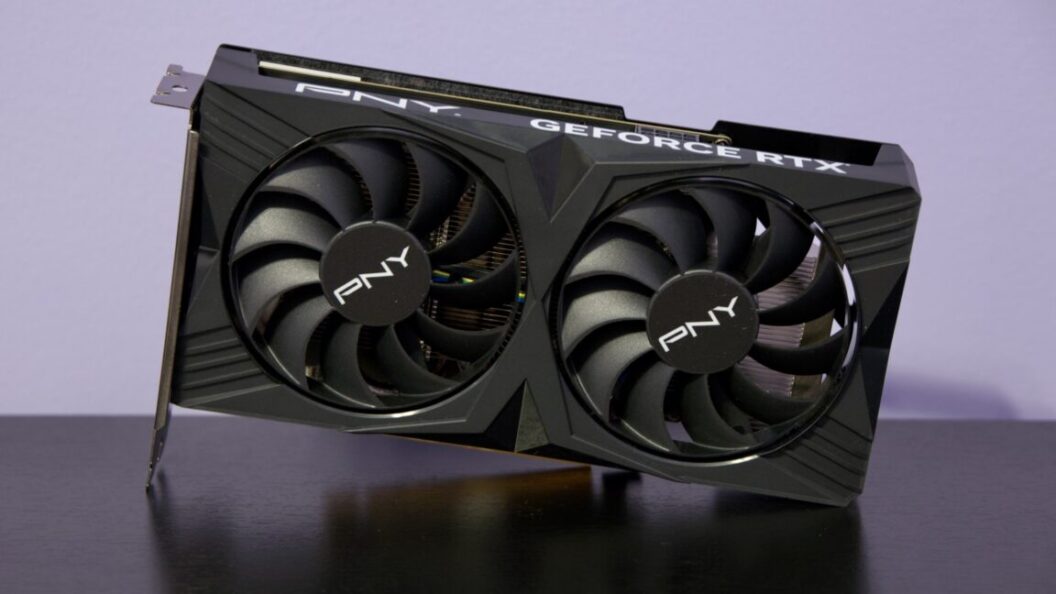Nvidia’s Upcoming RTX 50-Series GPUs: Leaked Specs and Market Availability
Nvidia’s recent launch of the GeForce RTX 50-series GPUs at the Consumer Electronics Show (CES) has generated significant excitement among gamers and tech enthusiasts. However, despite the announcement, potential buyers are facing challenges in obtaining these graphics cards at the manufacturer’s suggested retail prices. As market demand continues to exceed supply, speculation about Nvidia’s upcoming models is heating up, particularly the anticipated GeForce RTX 5060 and 5050 series.
Supply Chain Issues and Current Market Status
The current landscape for Nvidia’s RTX 50-series launch is marred by scarcity. Reports indicate that consumers have difficulty finding these new GPUs, regardless of whether they shop through Nvidia, AMD, or Intel. The ramifications of this supply crunch are felt broadly across the gaming community, as many are left eagerly awaiting availability at lower price points.
Leaked Specifications for RTX 5060 and 5050 Series
Recent leaks from a credible source, widely known in the tech community as Kopite, shed light on the specifications of the forthcoming RTX 5060 and 5050 GPUs. According to various reports, including insights from Tom’s Hardware, these new cards will retain several characteristics found in previous models but will be enhanced to cater to a broader market.
The leaked specs reveal several key features:
- CUDA Cores: An increase in the number of CUDA cores is expected, with the RTX 5060 Ti anticipating 4,608 cores, while the standard 5060 is likely to come with 3,840 cores.
- Memory Specifications: Unlike previous models, the 5060 series will feature GDDR7 memory, shifting from its GDDR6 predecessors. The 5050 is also expected to maintain an 8GB GDDR6 option.
- Power Consumption: There will be a noticeable increase in total graphics power (TGP), with the 5060 Ti pegged at 180 W, and the 5050 at 130 W.
- Performance Focus: The 8GB versions are primarily marketed for 1080p gaming, although GDDR7 could potentially elevate performance for higher resolutions, especially with broader memory bandwidth.
Here’s a comparison of the leaked RTX 5060 and 5050 specs alongside their predecessors from the 4000 series:
| Feature | RTX 5060 Ti (leaked) | RTX 4060 Ti | RTX 5060 (leaked) | RTX 4060 | RTX 5050 (leaked) | RTX 3050 |
|---|---|---|---|---|---|---|
| CUDA Cores | 4,608 | 4,352 | 3,840 | 3,072 | 2,560 | 2,560 |
| Boost Clock | Unknown | 2,535 MHz | Unknown | 2,460 MHz | Unknown | 1,777 MHz |
| Memory Bus Width | 128-bit | 128-bit | 128-bit | 128-bit | 128-bit | 128-bit |
| Memory Bandwidth | Unknown | 288 GB/s | Unknown | 272 GB/s | Unknown | 224 GB/s |
| Memory Size | 8GB or 16GB GDDR7 | 8GB or 16GB GDDR6 | 8GB GDDR7 | 8GB GDDR6 | 8GB GDDR6 | 8GB GDDR6 |
| TGP | 180 W | 160 W | 150 W | 115 W | 130 W | 130 W |
Anticipated Benefits and Challenges
The introduction of GDDR7 is a significant upgrade and could improve memory performance for users looking to play at higher resolutions. However, a potential drawback noted with the 4060 Ti was its relatively narrow memory bus, which could similarly limit the 5060 and 5050’s performance at1440p and 4K settings. Benchmark tests will be crucial to evaluate how these new cards perform under varying conditions.
Conclusion: Looking Ahead
The upcoming release of the RTX 50-series lower-end GPUs could be crucial for Nvidia in regaining its footing in a competitive market dominated by AMD and Intel. These specifications and enhancements signal Nvidia’s commitment to addressing gamer needs. As the speculation continues and launches draw nearer, the significance of these GPUs will largely depend on their availability and performance upon release.
For gamers, this creation of innovative technology juxtaposed with the challenges of supply chain logistics exemplifies the current climate in the tech industry. Stakeholders will want to monitor the situation closely, as any developments could influence purchasing decisions and overall market dynamics in the near future.









